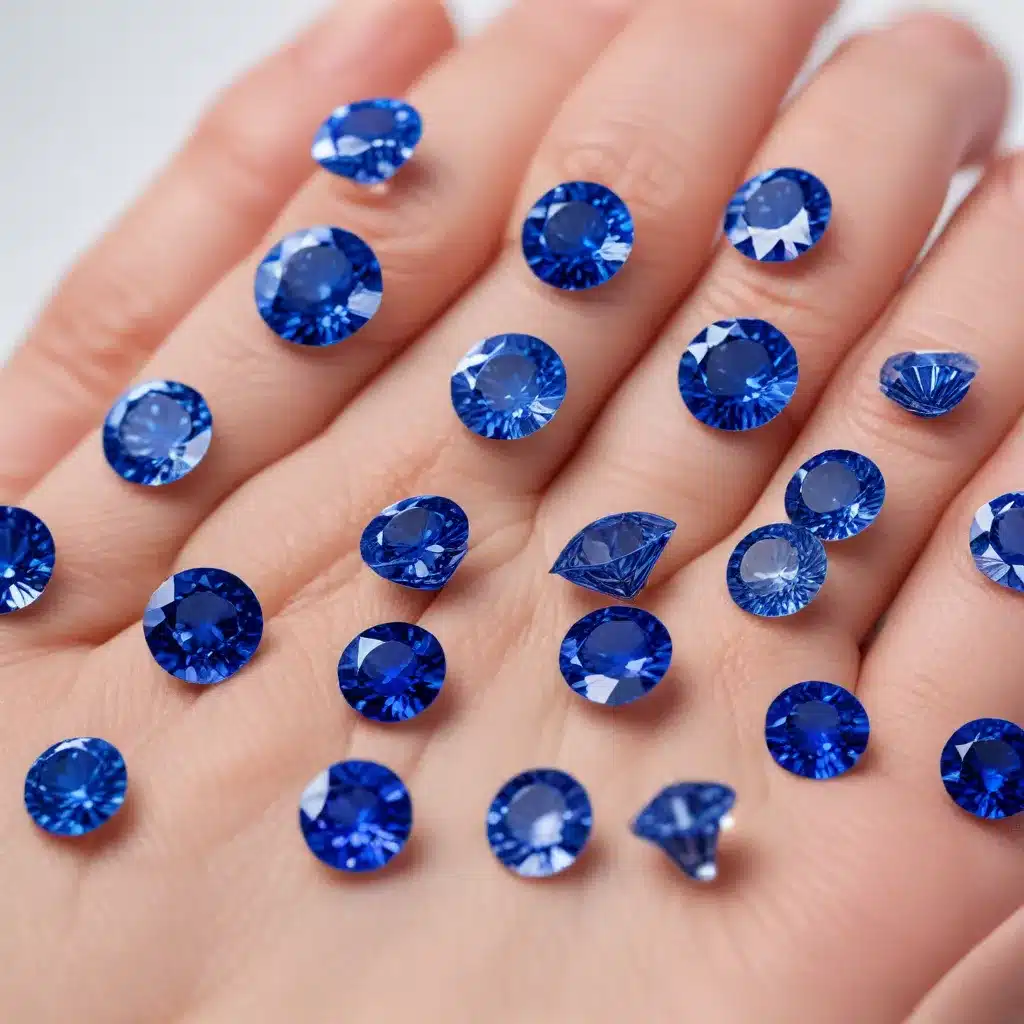
Amidst the glittering world of gemstones, synthetic sapphires have emerged as a captivating alternative to their natural counterparts. These lab-created wonders not only rival the beauty of their earth-grown siblings but also offer a range of advantages that make them a standout choice for jewelry enthusiasts and industry professionals alike. Join us as we delve into the fascinating realm of synthetic sapphires, exploring their composition, synthesis techniques, and the distinct characteristics that set them apart.
Composition and Structure
At the heart of a synthetic sapphire lies the mineral corundum, the same material that forms natural sapphires and rubies. The key difference lies in the way these gems are created. Whereas natural sapphires are formed deep within the Earth’s crust, under immense pressure and heat, synthetic sapphires are meticulously crafted in specialized laboratories, where scientists can precisely control the conditions to produce flawless crystals.
The crystalline structure of a synthetic sapphire is identical to its natural counterpart, with the atoms of aluminum and oxygen arranged in a highly ordered and stable pattern. This molecular-level similarity is what gives synthetic sapphires their exceptional hardness, durability, and optical properties, making them a viable alternative to mined gems.
Optical Properties
One of the most captivating aspects of synthetic sapphires is their optical brilliance. These lab-created gems possess a high refractive index, which refers to the way light bends and refracts as it passes through the gem. This property is responsible for the mesmerizing fire and sparkle that synthetic sapphires are known for, often rivaling or even surpassing the performance of natural sapphires.
Additionally, synthetic sapphires exhibit a remarkable dispersion of light, which is the separation of white light into its component colors. This dispersion creates the rainbow-like flashes that make these gems so visually stunning, captivating the eye with their kaleidoscopic brilliance.
Physical Characteristics
When it comes to physical properties, synthetic sapphires boast an impressive array of features that contribute to their allure. With a Mohs hardness of 9, they are nearly as hard as diamonds, making them highly resistant to scratches, chipping, and other forms of wear and tear. This durability ensures that synthetic sapphire jewelry maintains its pristine appearance for years to come, making it an ideal choice for everyday wear.
Synthetic sapphires also excel in their clarity, as the controlled laboratory environment allows for the elimination of many of the inclusions and imperfections that can be found in natural sapphires. This exceptional clarity enhances the overall visual appeal of the gems, creating a mesmerizing, flawless appearance.
Synthesis Techniques
The creation of synthetic sapphires is a testament to the ingenuity of modern science and technology. There are several well-established techniques used to produce these lab-grown gems, each with its own unique advantages:
Flame Fusion Method
The flame fusion method, also known as the Verneuil process, is one of the most common techniques for synthesizing sapphires. In this process, a powder of aluminum oxide is melted using an oxyhydrogen flame and then slowly solidified, forming a single crystal.
Flux Method
The flux method involves dissolving aluminum oxide in a molten flux, typically a combination of lead oxide and boron oxide. As the mixture cools, the aluminum oxide crystallizes, forming synthetic sapphire crystals.
Hydrothermal Method
The hydrothermal method employs high-pressure, high-temperature water to grow sapphire crystals. This technique mimics the natural conditions in which sapphires form, but in a controlled laboratory environment.
Each of these synthesis techniques offers unique advantages, allowing for the production of synthetic sapphires with exceptional consistency, quality, and a wide range of color variations.
Comparison to Natural Sapphires
While synthetic sapphires share many similarities with their natural counterparts, there are some distinct differences to consider. In terms of appearance, the brilliance and fire of well-crafted synthetic sapphires can be indistinguishable from natural gems, making them a visually appealing alternative.
However, one notable distinction is the lack of inclusions in synthetic sapphires. The controlled laboratory conditions enable the creation of flawless, eye-clean gems, whereas natural sapphires often contain unique inclusions and imperfections that contribute to their individual character.
When it comes to durability, synthetic and natural sapphires are nearly on par, with both ranking high on the Mohs hardness scale. This ensures that synthetic sapphire jewelry is just as resilient and long-lasting as pieces featuring natural gems.
Perhaps the most significant difference lies in cost and availability. Synthetic sapphires are generally more affordable than their natural counterparts, as the production process is more efficient and less resource-intensive. This accessibility allows for the creation of larger and higher-quality gems within a more modest budget, making synthetic sapphires an appealing choice for those seeking exceptional value.
Applications and Uses
The versatility of synthetic sapphires extends far beyond the realm of fine jewelry. These remarkable gems find applications in a wide range of industries, from the jewelry and gemstone market to the technological and industrial sectors.
In the jewelry and gemstone industry, synthetic sapphires are increasingly popular for their visual allure, durability, and cost-effectiveness. They are commonly used in engagement rings, pendants, earrings, and a variety of other fine jewelry pieces, offering consumers a sustainable and affordable alternative to natural sapphires.
Beyond the jewelry realm, synthetic sapphires have found a home in industrial and technological applications. Their exceptional hardness, thermal conductivity, and scratch resistance make them invaluable in the production of precision instruments, electronic components, and even watch substrates.
Ethical and sustainable considerations have also contributed to the growing popularity of synthetic sapphires. As lab-grown gems, they eliminate the environmental impact and potential ethical concerns associated with traditional mining operations, making them an attractive choice for the eco-conscious consumer.
The captivating world of synthetic sapphires is a testament to the ingenuity of modern science and the pursuit of innovation in the gemstone industry. These lab-created wonders seamlessly blend breathtaking beauty, unparalleled durability, and remarkable affordability, making them a standout choice for jewelry enthusiasts, industry professionals, and anyone seeking the timeless allure of a sapphire. Discover the brilliance of synthetic sapphires and let them inspire your next jewelry creation or personal adornment.

